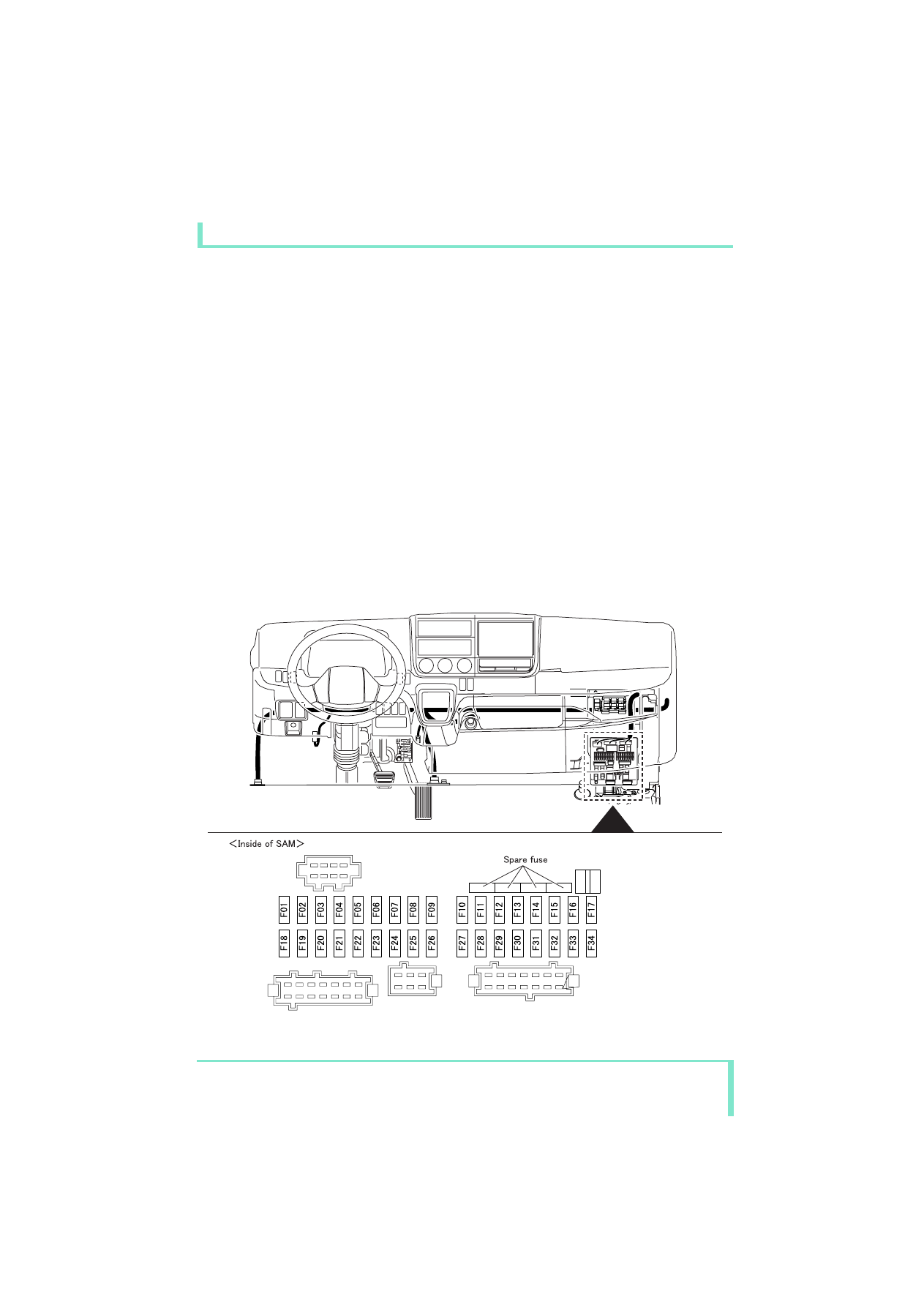Mitsubishi Canter (FE, FG). Manual - part 14

56
5 Damage prevention
5.1 Electrical system
MITSUBISHI FUSO body/equipment mounting directives for FE, FG Issue date: 06. 07. 2012
!
Only print out complete sections from the current version
i
5.1.3
Fuse
(a) Do not route power wiring from any fuse for
unintended use. The existing fuse on the
chassis side is of the optimum capacity for the
service load, frequency of use, etc. When
installing an additional electrical device
associated with body equipment, do not
connect parts or harnesses which may provide
an error signal to the chassis power line or
ground line.
Be sure to lead out power for body equipment-
related apparatus and lamps via designated
appropriate connectors. For further details, see
"Mounting Location of Optional Terminal Inside
Cab" (
Fuses in the cab are provided on the signal
detection and actuation module control SAM
unit. When removing and reinstalling them, do
so securely one by one. For other precautions
on the SAM, see "5.1.1 Signal detection and
actuation module-related parts" (
(b) Mid-point extension of existing wiring or the use
of a larger capacity fuse could cause an
excessive current to flow in the power fuse box,
resulting in a fire.
(c) Arrangement of power fuses, relay in the
instrument panel, sensors and ECU
• Fuse layout drawing